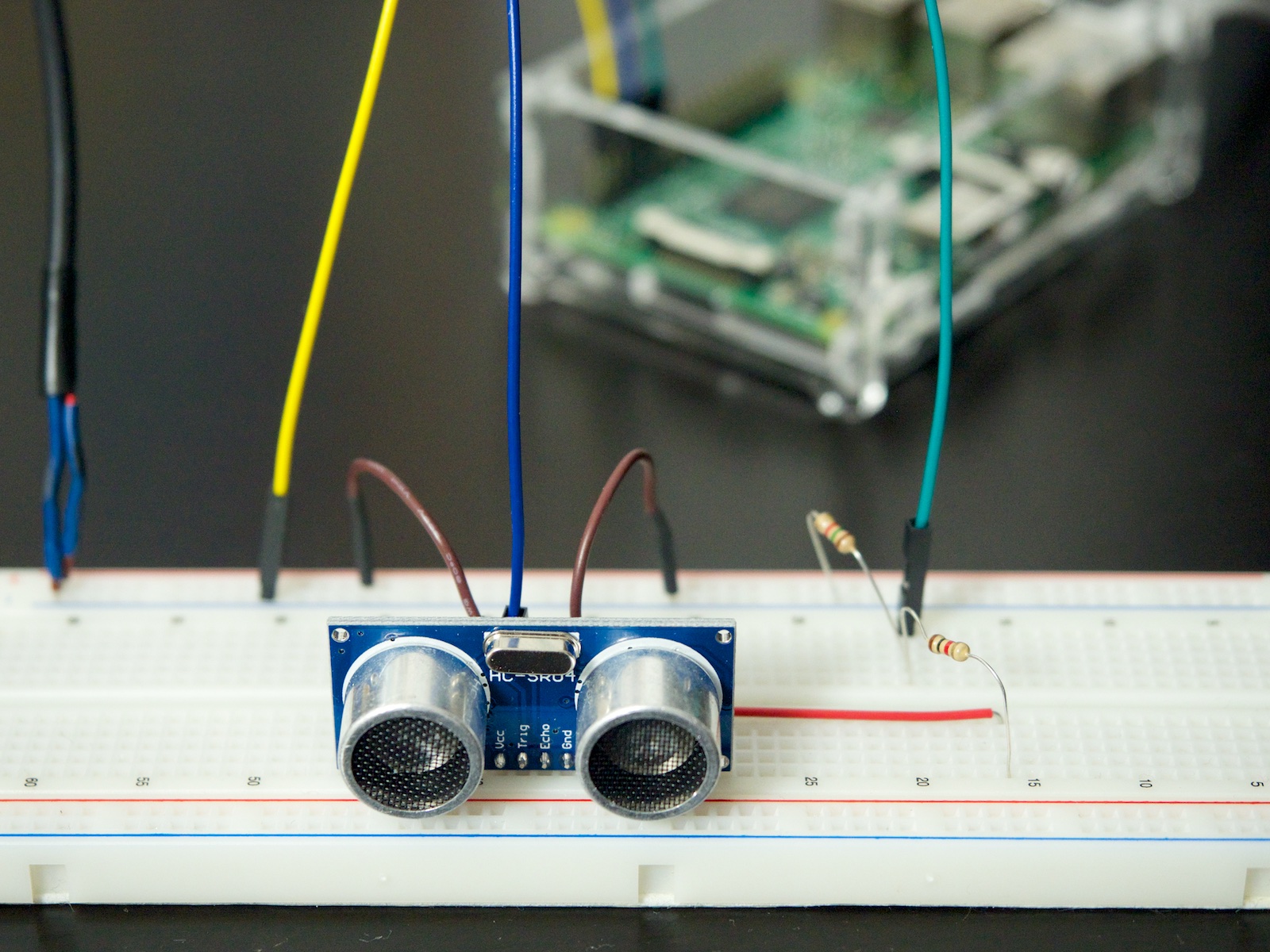HC-SR04
The information here about the HC-SR04 ultrasonic sensor is based on a ModMyPi article for Raspberry Pi and the Elecfreaks user guide for Arduino.
Sensor Properties
| Operating Voltage | 5 V DC |
| Operating Current | 15 mA |
| Operating Frequency | 40 kHz |
| Nearest Range | 2 cm |
| Farthest Range | 4 m |
| Beam Angle | 15 degrees |
| Input Trigger Signal | 10 μs TTL pulse (low: 0-0.8 V, high: 2 V to VCC, where VCC = 5 V ±10%) |
| Output Echo Signal | Output TTL level signal, proportional to range |
Wiring
The sensor module has four pins: Ground (GND), Echo Pulse Output (ECHO), Trigger Pulse Input (TRIG), and 5 V Supply (Vcc). It is powered through the Vcc and ground (GND) pins.
The sensor circuit is designed for TTL voltage levels. That is, 0 V for low and 5 V for high. The GPIO pins of the Raspberry Pi, however, are rated at 3.3 V. Sending a 5 V signal into an unprotected 3.3 V GPIO pin could damage the pin. A simple voltage divider circuit, consisting of two resistors, can be used to lower the sensor output voltage to 3.3 V.
Operation
The controller starts the range measurement by raising pin TRIG to 5 V for at least 10 μs and thereby triggering eight 40 kHz ultrasonic pulses (beyond the 20 kHz high frequency limit of human hearing). The pulse waves bounce off any nearby objects and some are reflected back to the sensor. The sensor detects these reflected waves and raises the ECHO pin to 5 V for a duration proportional to the distance of the objects that the waves are reflected from.
A single range measurement is therefore performed like this:
- Initialize by setting the TRIG and ECHO pins to LOW.
- Raise the TRIG pin to HIGH for at least 10 μs.
- Wait for a rising edge on the ECHO pin, start a timer when detected.
- Wait for the falling edge on the ECHO pin, stop the timer when detected.
- Calculate the distance from the time that the ultrasonic waves spent travelling in air (distance = time * velocity / 2, where the velocity of ultrasonic waves in air is 340 m/s).
Code for Raspberry Pi
The code assumes that the output to the sensor's TRIG pin is connected to GPIO #23 and the input from the sensor's ECHO pin is connected to GPIO #24.
import RPi.GPIO as GPIO import time GPIO.setmode(GPIO.BCM) TRIG = 23 ECHO = 24 print "Distance Measurement In Progress" GPIO.setup(TRIG,GPIO.OUT) GPIO.setup(ECHO,GPIO.IN) GPIO.output(TRIG, False) print "Waiting For Sensor To Settle" time.sleep(0.25) GPIO.output(TRIG, True) time.sleep(0.00001) GPIO.output(TRIG, False) while GPIO.input(ECHO)==0: pulse_start = time.time() while GPIO.input(ECHO)==1: pulse_end = time.time() pulse_duration = pulse_end - pulse_start distance = pulse_duration * 17150 distance = round(distance, 2) print "Distance:",distance,"cm" GPIO.cleanup()
Limitations
The ultrasonic sensor is not able to measure distances to objects with highly diffuse surfaces or surfaces that are angled so that most incoming waves are reflected away from the sensor.



